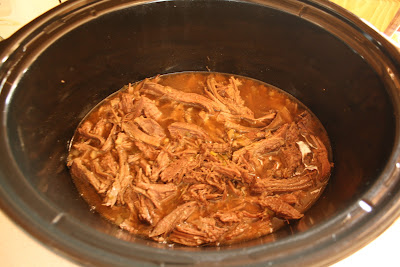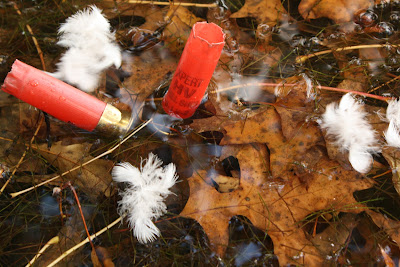Since our group was drawn in one of the state's duck blind lotteries to build a temporary blind for the 2011 -2012 season, we've been looking at plans and discussing ideas on what to build. There's gonna be anywhere from 2 to 5 of us hunting at a time with multiple dogs at times, so we were going to need something fairly big. We were also looking at keeping costs reasonable, having easy assembly, good concealment, light weight portability, and based on the spot we selected we would need shooting in all directions. There will be open water on the lake to the front side, with a marshy area that ducks & geese like to hunker down in immediately to the back side of the blind.
So, after a few days of research, planning and discussions, it was time to get to action and build a PVC duck blind frame. For the project I used 1" schedule 40 PVC. Luckily, the guy that came along to help me at Lowes used to be a waterfowler himself, and when he looked over my design plans, he felt that the 1" selection would be stout enough to bear some weight from blind material and also make for a sturdy structure. It would also be cost effective & light weight. Perfect.
Using the 10' lengths that are commonly available at most hardware stores, I drew up the plans for the blind to measure 10' long, by 4' wide, by roughly 6' tall at the front sloping back to about 5.5' in the back. There's lots of specialty fittings that you can find online to build a slightly more specialized PVC blind, but I made our blind based on what was available at the store. The stock lengths of PVC come in 10' sections, and for the fittings I used multiple T fittings, 2 cross fittings (center front & back), a couple 90 degree elbows (top corners), and several of the 3 way elbow fittings (the bottom four and top 2 back corners). I also customized a couple of the T fittings by cutting them in half, and bolting them to other sections of PVC pipe for the middle & top side sections.
Other materials I used: couple cans of flat spray paint to knock down the glossy white finish of the PVC, and zip ties.... lots and lots of zip ties.
Once I had the frame built and spray painted, I went through and labeled all of the pieces so that I would be able to take it apart, then reassemble at the lake. I labeled everything from standing inside the blind and looking out the front side.
 |
| Paying attention to details is of the utmost importance. |
For the brushing in of the blind, I also used Lowes and hit up their landscaping section, buying some plastic chicken fencing that was on clearance. I picked up 2 rolls of the 36" by 50' fencing that I tied up along the horizontal center sections, while for the roof I had to overlap two lengths of the fencing and zip tie them together along their seams to make one large piece that covers the roof and overhang on all for side by a few inches.
Next, I bought 25 lbs of raffia grass from the Joseph M. Stern Co. The nice thing about buying from this company is not only did I save on shipping because they're located in Cleveland & I was able to schedule a pick up for my order, but they also have a wide selection of pre-dyed raffia grass to choose from. The colored grass does cost more, but it's worth it for being able to blend the selection of colors. I've bought natural raffia grass from outdoor retailers before & had to them use RIT fabric dye to add any colors to it. That's kind of a pain, and can get pretty messy. 25 lbs was just the right amount to brush up a blind of this size, and it's also the minimum order because they are mainly a whole sale company.
 |
| Grass laid out and ready to be mixed & attached to the netting. |
So with a big box of grass, 200 zip ties, and a frame now ready to go, I assembled my child labor once again and began more of my sweat shop assembly techniques. My son is getting pretty good with the zip ties... pretty soon he'll be ready for things like duct tape, and gorilla glue...
 |
| Blends in well to the suburban surroundings. |
After attaching all the raffia grass in the garage over the past few days, everything was finally complete and ready to be disassembled. Our goal of building a light weight blind was certainly met, as I was able to lift the whole thing from inside the garage and carry it out onto the driveway where there was more room to operate. When we reassemble in the field, we'll also be adding some 1/4" plywood on to the roof that will help keep us dry on the inside, but it will also keep the raffia grass from collapsing into the blind should it get too much weight on it from rain or snow this winter. We'll also be using available natural material to add to the blind, and brush it in better once we transport everything to the lake.
The raffia rolled up nicely with the netting kept to the outside. Once we get to the blind site, 2 people will easily be able to unroll the sections and zip tie them into the blind.
 |
| Backside view of the raffia netting. |
Hopefully all the work that went into this blind will pay off this season. Even if it doesn't I'm sure our group will have a good time trying to fill our limits and load down the game straps, and that's what it's all about. Just getting out there with good friends, and having a good time. That, and breakfast in the duck blind ain't too bad either!

















